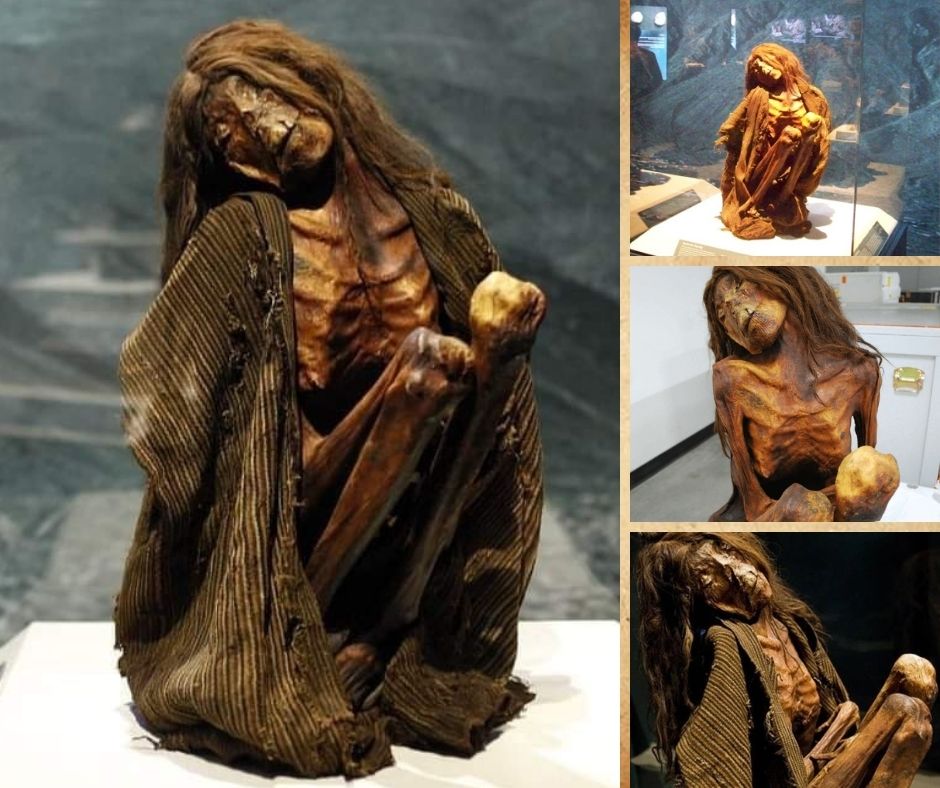The female mummy, Pre- Columbian before 1400 AD at the Lippisches Landesmuseum Detmold

The female mummy at the Lippisches Landesmuseum Detmold, often referred to as the Detmold Mummy, is one of the most well-preserved ancient human remains in the world. This mummy is particularly fascinating because it is believed to be around 6,500 years old, making it older than the famous Egyptian mummies and even Ötzi the Iceman.
Originally discovered in South America, the mummy belonged to a pre-Columbian civilization in what is now Peru or Bolivia. It was naturally mummified due to the dry and cold conditions of the Andes Mountains, which preserved its skin, hair, and even internal organs. Scientists have been able to study her health, diet, and possible causes of death through modern techniques like CT scans and DNA analysis.
One of the most striking aspects of the Detmold Mummy is her facial features, which are still intact despite being thousands of years old. Researchers believe she suffered from a serious illness, possibly a heart defect or lung infection, which might have contributed to her death at a young age.
This mummy provides valuable insights into ancient burial practices, health conditions, and daily life in early Andean civilizations. It remains one of the most significant exhibits at the Lippisches Landesmuseum in Detmold, Germany, where visitors can see it alongside other archaeological treasures.
Have you ever visited the museum, or are you interested in learning more about ancient South American mummies?